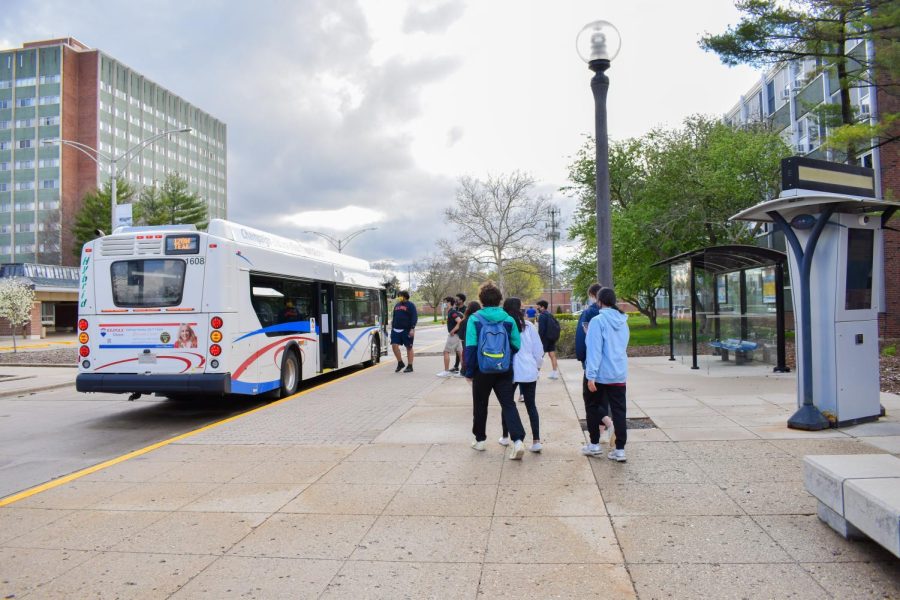MTD to change campus bus routes in fall due to staff shortages
Students board the 120W Teal bus at the stop in front of the PAR residence hall on April 10, 2021. MTD has announced a change to some of the bus routes, such as the 22/220 Illini, 12 Teal and 13/130 Silver, due to a staff shortage.
June 1, 2022
Starting in the fall, the campus community will see changes to bus routes as a result of a shortage of drivers at the Champaign-Urbana Mass Transit District.
Times between each bus will be more consistent, according to a plan that was presented at an MTD board meeting last month.
Campus routes this past year ran on varied frequencies, meaning that riders could wait 10 minutes for one bus and 20 minutes for the next. This was the case for busier routes like the 22/220 Illini. In the fall, this bus will run at consistent 15 minute frequencies.
“We’re not actually cutting service for the fall of 2022,” said Amy Snyder, MTD chief of staff. “What we’re doing is we’re redesigning the schedules.”
Snyder said they don’t want to rush the process of training new drivers, which can take up to two months. MTD is seeing a workforce shortage like many other industries, she said.
Get The Daily Illini in your inbox!
“We’re not going to compromise on safety, and we’re not going to rush it,” Snyder said. “So it’s just been really tough rebuilding.”
Routes affected by the changes include the 22/220 Illini, 12 Teal, 13/130 Silver and 10 Gold. The varied frequency will be replaced with more consistent wait times ranging from 15 to 20 minutes.
All other routes will maintain their existing reduced service levels, which were implemented in January.
Daniel Saphiere, an analyst planner for MTD, said at a public hearing two weeks ago that this restructuring only works efficiently for busier routes, which is why community routes will continue to operate at reduced levels.
“The simple reality is, we cannot provide the same level of service when we don’t have the same number of drivers as in previous years,” Saphiere said.
He said this is the best way to improve service without increasing resources.
According to data from MTD, there were 175 operators working full-time equivalent at the beginning of this spring. Currently, MTD has 166 operators. Prior to the COVID-19 pandemic, there were 194 operators.
The campus community also makes up a large portion of MTD’s ridership, as high as 70% before the pandemic, according to Snyder.
MTD and the Champaign-Urbana area aren’t unique to these problems. A report released in April from the American Public Transportation Association found that national ridership levels have recovered to more than 60% of pre-pandemic levels.
The report states that these levels are impacted by the makeup of the local economy, and transportation systems in college towns were severely affected compared to other cities.
Papia Sultana, a graduate student studying mechanical engineering, uses MTD buses frequently to get to campus because she lives in Urbana.
She said MTD should be prioritizing the campus community and that solutions to worker shortages should not include route reductions.
“This is a university town so students have to do classes, and I think (MTD) can compensate. This should be a huge priority,” Sultana said.
The biggest concerns for MTD is making sure that there’s enough buses for returning riders and times between buses are consistent. And Snyder said this comes back to having enough bus operators.
“I would just ask for continued patience, and the rebalancing of the schedule will hopefully make the service more predictable and consistent for everybody,” Snyder said.







